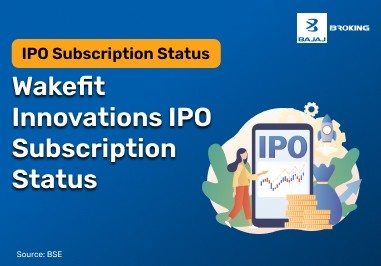What is India VIX in the stock market?
India VIX, also known as the Volatility Index, measures the expected market volatility over the near term. It gives an estimate of how much the NIFTY 50 index might fluctuate in the coming 30 days, based on the pricing of its options. Unlike a price index that reflects price movements of underlying stocks, the India VIX reflects anticipated volatility using order book data of NIFTY options.
When markets are highly volatile, the index usually spikes. It increases when there is uncertainty and typically falls when the market stabilises. The India VIX is expressed in annualised percentage terms. For instance, a reading of 20 implies a likely annual movement of 20% in the NIFTY 50, up or down. It is a useful sentiment gauge, especially during economic or geopolitical events.
India VIX, or the India Volatility Index, measures market volatility expectations over the next 30 days. It is derived from NIFTY Index options and reflects investor sentiment, fear, and uncertainty in the stock market. A higher India VIX indicates increased expected volatility, while a lower value suggests market stability. Traders and investors use it to gauge risk levels and make informed decisions. Investors and traders often use the India VIX to adjust their strategies in response to market risk, making it an essential tool for assessing potential market fluctuations in the short term.
How is India VIX Calculated
India VIX, short for India Volatility Index, is calculated using the Black-Scholes model, which considers the order book of NIFTY options. Specifically, it evaluates the best bid-ask prices of near-month and next-month NIFTY options contracts to estimate expected market volatility over the next 30 calendar days. The calculation includes both calls and puts, and focuses on out-of-the-money (OTM) options. These include call options above the current NIFTY level and put options below it. The final value represents annualised volatility in percentage terms. The methodology follows the CBOE (Chicago Board Options Exchange) VIX model but is customised for Indian markets. By incorporating implied volatility across various strike prices rather than a single point, the India VIX captures a more comprehensive picture of investor sentiment and risk expectations. Higher India VIX values indicate higher market fear and expected volatility, while lower values point to stable or confident market conditions. It is published by NSE and updated in real-time during market hours. Traders and analysts often monitor sudden spikes or drops in the India VIX to gauge market reactions to economic events, policy changes, or global cues. It is not a predictive tool but a reflection of implied uncertainty.
How India VIX is works?
India VIX, or the India Volatility Index, serves as a barometer for market volatility over the upcoming 30 days, with its values derived from the NIFTY 50 options' bid-ask prices. Introduced by the National Stock Exchange (NSE), it quantifies the expected fluctuation in market prices, helping investors understand the degree of market risk or uncertainty. A higher India VIX indicates anticipated significant market changes, while a lower value suggests stability. India VIX doesn't reflect actual market movement but instead captures the predicted volatility, making it an invaluable tool for both traders and long-term investors when assessing market sentiment and making informed trading or investment decisions.
How is India VIX Calculated?
India VIX is calculated using a method adapted from the CBOE (Chicago Board Options Exchange) model. The computation involves key inputs from the NIFTY options order book and uses mathematical techniques like natural cubic spline interpolation.
India VIX Formula:
India VIX = 100 * √((Sum[Weighted Implied Volatility Squared]) / Total Weight)
- Sum[Weighted Implied Volatility Squared]: This represents the total of the squared implied volatilities for each option, with each value weighted according to its significance. It reflects the collective market view of future volatility.
- Total Weight: This is the aggregate open interest of all selected options. It helps ensure that only actively traded options are considered, which leads to a more stable and reliable VIX calculation.
Elements Considered in the Calculation:
Time to Expiry
Instead of counting days, the India VIX model measures the exact time to expiry in minutes. This granular approach enhances precision in the final volatility estimate, especially since small timing differences can impact short-dated options significantly.
Interest Rate
India VIX uses the risk-free rate corresponding to the option's expiry duration, typically within a 30–90 day period. This helps in discounting the option’s future values correctly while computing the forward index level for volatility estimation.
Forward Index Level
The forward index level is derived from the most recent prices of NIFTY futures for the respective expiry month. This value helps determine the at-the-money strike price, which is essential in selecting the relevant options for the calculation.
Bid-Ask Spread
India VIX incorporates the mid-price of bid and ask quotes to smooth out anomalies and improve accuracy in option pricing used for volatility derivation. This ensures that the volatility estimate reflects a realistic tradeable level rather than extreme outliers.
Only out-of-the-money options are considered—calls above the at-the-money strike and puts below it. The favourable bid and ask prices for these contracts are used to estimate implied volatility, reflecting current market expectations.
When quotes for certain strikes are not available, values are interpolated using a statistical method called the natural cubic spline. After identifying the correct quotations, variances are calculated separately for near and mid-month expiry contracts.
How To Use India Vix For Trading - Volatility Index India Market Applications
India VIX is often seen as a market sentiment indicator. A rising VIX typically signals rising uncertainty, which may prompt institutional participants to adjust their hedging strategies using options.
For option traders, the VIX is especially useful. When volatility is high, premiums increase, favouring option buyers. Lower volatility may benefit option sellers due to quicker time value decay.
Some market participants trade directly on volatility expectations. This can be done using strategies such as straddles or strangles when anticipating volatility spikes. Alternatively, VIX futures can be used to trade pure volatility without taking a directional bet on the market.
Over time, the India VIX and NIFTY index often show an inverse relationship. Historically, market tops tend to align with low VIX readings, while market bottoms are associated with high VIX levels. This behaviour makes the India VIX a relevant input in strategic decision-making for institutions managing index-linked portfolios.
India VIX vs Nifty
India VIX and Nifty are two distinct indices that serve different purposes in the market. While Nifty 50 tracks the performance of the top 50 companies listed on the NSE, providing a benchmark for stock market performance, India VIX measures the market's expectation of volatility for the next 30 days.
The relationship between the two is inversely correlated: when India VIX rises, indicating increased market fear or uncertainty, Nifty typically declines as investors become cautious. Conversely, when India VIX falls, market stability is expected, leading to a potential rise in Nifty. Traders and investors use this inverse relationship to time market entries and exits, adjusting strategies based on anticipated volatility levels in the Nifty index.
Why Do We Need India VIX?
Imagine you’re planning a picnic, and you want to know if the weather will be sunny or rainy. Knowing the weather forecast helps you prepare for the day and make decisions accordingly. In a similar fashion, India VIX helps investors and traders prepare for market conditions by providing insights into market sentiment.
Real-World Example
Let’s look at a simple example to understand how India VIX works in a real-world scenario. Suppose India VIX is currently at 15, indicating moderate expected volatility.
- If you are a long-term investor, you might decide to continue holding your investments because the market is relatively stable.
- If you are a day trader, you might look for short-term trading opportunities as there’s potential for price swings.
- If you are a risk-averse investor, you might consider buying protective options to limit your downside risk in case of unexpected market turbulence.
Wrapping Up
In the world of stock market investing, understanding and using tools like India VIX can make a significant difference in your success. By recognizing the market’s level of expected volatility, you can make informed decisions, manage risk effectively, and potentially maximise your returns.
Remember that India VIX is just one piece of the puzzle. It should be used in conjunction with other fundamental and technical analysis tools to make well-informed investment choices. So, whether you’re a seasoned trader or a novice investor, incorporating India VIX into your investment strategy can help you navigate the complex world of stock markets with greater confidence.














